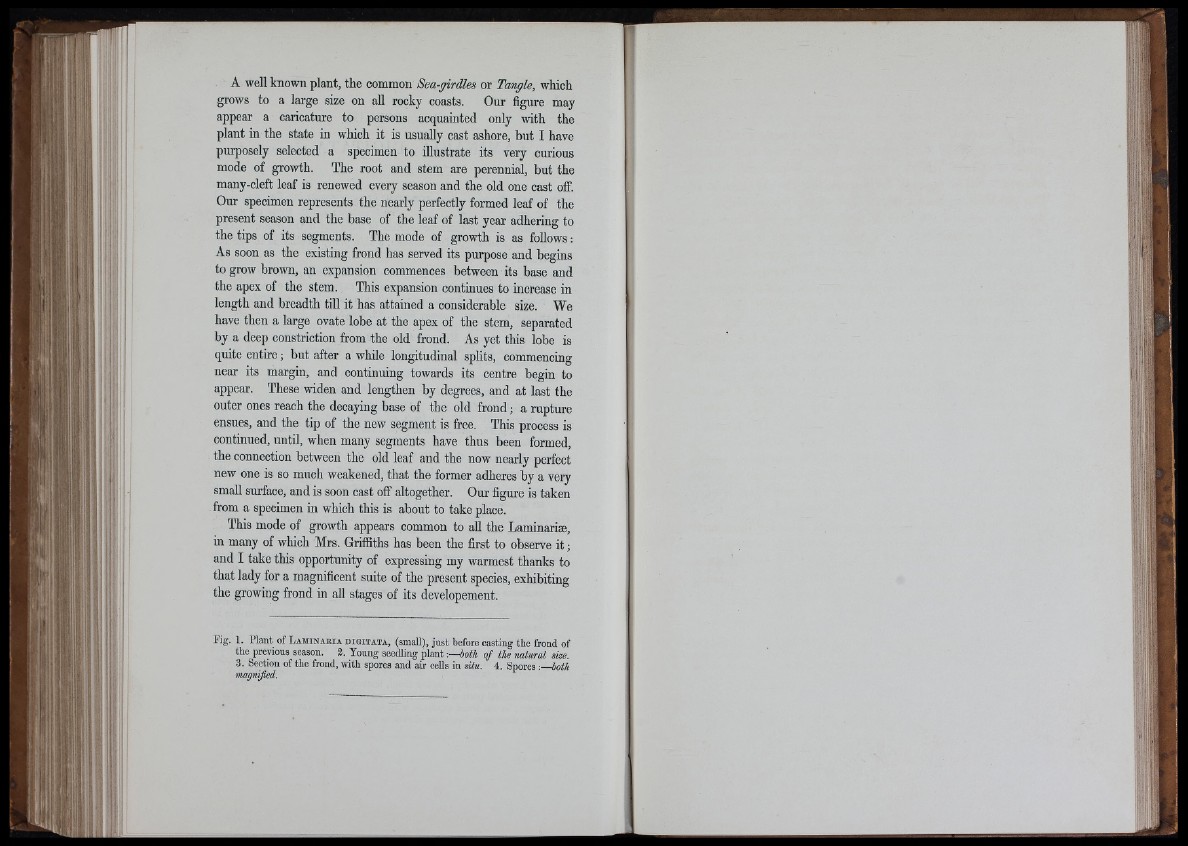
A well known plant, the common Sea-girdles or Tangle, which
grows to a large size on all rocky coasts. Our figure may
appear a caricature to persons acquainted only with the
plant in the state in which it is usually cast ashore, but I have
purposely selected a specimen to illustrate its very curious
mode of growth. The root and stem are perennial, but the
many-cleft leaf is renewed every season and the old one cast off.
Our specimen represents the nearly perfectly formed leaf of the
present season and the base of the leaf of last year adhering to
the tips of its segments. The mode of growth is as follows :
As soon as the existing frond has served its purpose and begins
to grow brown, an expansion commences between its base and
the apex of the stem. This expansion continues to increase in
length and breadth till it has attained a considerable size. We
have then a large ovate lobe at the apex of the stem, separated
by a deep constriction from the old frond. As yet this lobe is
quite entire ; but after a while longitudinal splits, commencing
near its margin, and continuing towards its centre begin to
appear. These widen and lengthen by degrees, and at last the
outer ones reach the decaying base of the old frond ; a rupture
ensues, and the tip of the new segment is free. This process is
continued, until, when many segments have thus been formed,
the connection between the old leaf and the now nearly perfect
new one is so much weakened, that the former adheres by a very
small surface, and is soon cast off altogether. Our figure is taken
from a specimen in which this is about to take place.
This mode of growth appears common to all the Laminariæ,
in many of which Mrs. Griffiths has been the first to observe it ;
and I take this opportunity of expressing my warmest thanks to
that lady for a magnificent suite of the present species, exhibiting
the growing frond in aU stages of its developement.
Fig. 1. Plant of L a m in a r ia d ig it a t a , (small), just before casting the frond of
the previous season. 2. Young seedling p lan t:— loth o f the natural dze.
3. Section of the frond, with spores and aii- cells in dtu. 4. Spores -.— both
i t